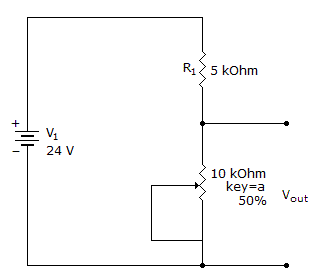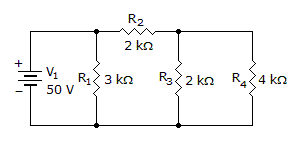Discussion
Home ‣ Electronics ‣ Analog and Digital Converters See What Others Are Saying!
- Question
What is the major advantage of the R/2R ladder digital-to-analog (DAC), as compared to a binary-weighted digital-to-analog DAC converter?
Options- A. It only uses two different resistor values.
- B. It has fewer parts for the same number of inputs.
- C. Its operation is much easier to analyze.
- D. The virtual ground is eliminated and the circuit is therefore easier to understand and troubleshoot.
- Correct Answer
- It only uses two different resistor values.
- 1. One of the most common applications of a potentiometer is as an adjustable voltage divider, also known as
Options- A. voltage control
- B. current control
- C. volume control
- D. divider control Discuss
- 2. If three resistors of 1.5 kilohms, 470 ohms, and 3300 ohms are in series with a 25-volt source, what is the total circuit current?
Options- A. 210 mA
- B. 5.2 mA
- C. 4.7 mA
- D. .007 A Discuss
- 3.

While putting three 1.5 V batteries into a flashlight, you put one in backwards. The flashlight will be ______________.
Options- A. brighter than normal
- B. dimmer than normal
- C. off
- D. the same Discuss
- 4. If series resistors dissipate 16 mW, 107 mW, 146 mW, and 243 mW, what is the total power consumed by the circuit?
Options- A. 128 mW
- B. 269 mW
- C. 512 mW
- D. 1024 mW Discuss
- 5. What are the minimum and maximum output voltages?

Options- A. 0 V, 4 V
- B. 0 V, 8 V
- C. 0 V, 12 V
- D. 0 V, 16 V Discuss
- 6. What is the permeability of machine steel?
Options- A. 1.1 x 10?4
- B. 5.65 x 10?4
- C. 6.9 x 10?3
- D. 8.8 x 10?3 Discuss
- 7. The current through R1 is 17 mA.

Options- A. True
- B. False Discuss
- 8. If a repetitive-pulse waveform is applied to an RC integrator, the output waveshape depends on the relationship of the circuit time constant and the duty cycle of the input pulses.
Options- A. True
- B. False Discuss
- 9. The __________ program is used to convert mnemonic code to machine code.
Options- A. debug
- B. C++
- C. fortran
- D. assembler Discuss
- 10. The total power dissipated is 4.8 watts.

Options- A. True
- B. False Discuss
More questions
Correct Answer: volume control
Correct Answer: 4.7 mA
Correct Answer: dimmer than normal
Correct Answer: 512 mW
Correct Answer: 0 V, 16 V
Correct Answer: 5.65 x 10?4
Correct Answer: True
Correct Answer: False
Correct Answer: assembler
Correct Answer: False
Comments
There are no comments.More in Electronics:
Programming
Copyright ©CuriousTab. All rights reserved.
